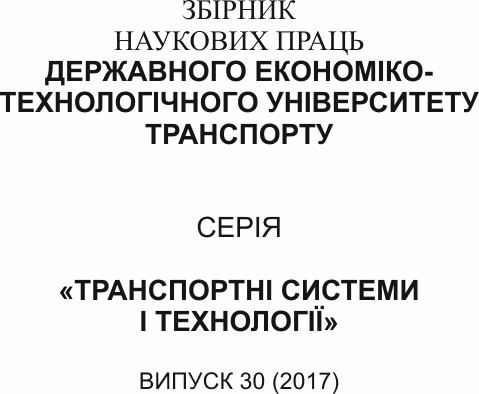RESEARCH PSEUDORANDOM NUMBER GENERATOR BASED ON ASYNCHRONOUS CELLULAR AUTOMATON
Keywords:
generator pseudorandom sequence of numbers, cell makersAbstract
The pseudorandom bit sequence generator that is implemented on asynchronous cellular automata is considered. The neighborhood von Neumann, the state of which indicates the direction of transfer of the active signal is used. The generator hardware implementation and software modeling are presented. A test analysis generated bit sequences was carred out. In the paper is presented the results test in the form of a chart that shows quite a good bit sequence generator that was formed. Designed generator is easy to use and has a high statistical characteristics and high performance. The generator has been designed with two components: by cellular automata and systems of comutation.
References
1. Bruce Schneier. «Applied cryptography. Protocols, and algorithms for language yshodnue tekstu S. 2nd edition , M .: Case 2003- 524s
2. I.V. Chuhunkov Methods and sredstva otsenki quality generators psevdosluchaynыh sequences, oriented to the decision of problems of protection of information: Uchebnoe posobye. M .: NYYAU MiFi, 2012, 236 p.
3. Ivanov M.A, Chuhunkov I.V Application and evaluation of quality generators psevdosluchaynuh posledovatelnostey, N .: KUDYTS images, 2003, 240 p.
4. von Neumann J. Various techniques used in connection with random digits [Applied Mathematics Series.] Vol, 1951, 12. P. 36-38.
5. L’Ecuyer P. Uniform random number generation [Annals of Operations Research.] Vol, 1994, 53. P. 77-120.
6. Wolfram S. Random sequence generation by cellular automataю- Advances in Applied Mathematics, Vol, 1956 –7, P. 123-169.
7. Lehmer D. Mathematical methods in large-scale computing units [Large-Scale Digital Calculating Machinery: Symp. proc. Harvard] 1951, P. 141-146.
8. Thomson W. A modified congruence method of generating pseudo-random numbers [Computer Journal.] Vol, 1958, P. 83-86.
9. Cho S. J. New syntheesis of one-dimensional 90/150 liner hybrid group CA / S. J. Cho, U. S. Choi, H. D. Kim, Y. H. Hwang, J. G. Kim, S. H. Heo [IEEE Transactions on comput-aided design of integrated circuits and systems] 2007, No. 25 (9), P. 1720-1724.
10. Marsaglia G. Random number generators [Journal of Modern Applied Statistical Methods.] Vol, 2003 – 2. P. 2-13.
11. Eichenauer J., Lehn J., Topuzoglu A. A nonlinear congruential pseudorandom number generator with power of two modulus [Mathematics of Computation.] Vol, 1988 – 51. P. 757-759.
12. Lewis Т., Payne W.. Generalized feedback shift register pseudorandom number algorithms [Journal of ACM.] Vol, 1973 – 21. P. 456-468.
13. Sukhinin B.M. Vusokoskorostnue generators psevdosluchaynuh sequences based kletochnuh avtomatov / BM Sukhinin [Applied discrete mathematics] 2010, No. 2, P. 34 – 41.
14. S. Bilan, M. Bilan, S. Bilan. Novel pseudo-random sequence of numbers generator based cellular automata.- Information Technology and Security. January-June 2015. Vol. 3. Iss. 1 (4).- p. 38-50.
15. http://www.fourmilab.ch/random/
16. Hamming, Richard W. Coding and Information Theory. Englewood Cliffs NJ: Prentice-Hall, 1980.
17. Knuth, Donald E. The Art of Computer Programming, Volume 2 [Seminumerical Algorithms. Reading MA: Addison-Wesley], 1969.
Література:
1. Брюс Шнайер.. «Прикладная криптография. Протоколы, алгоритмы и исходные тексты на языке С. 2-е издание». – М.: Дело, 2003. – 524 с.
2. Чугунков И.В. Методы и средства оценки качества генераторов псевдослучайных последовательностей, ориентированных на решение задач защиты информации: Учебное пособие. М.: НИЯУ МИФИ, 2012 – 236 с.
3. Иванов М.А., Чугунков И.В. Теория, применение и оценка качества генераторов псевдослучайных последовательностей. – М.: КУДИЦ-ОБРАЗ, 2003. – 240 с.
4. von Neumann J. Various techniques used in connection with random digits // Applied Mathematics Series. Vol, 1951. – № 12. – P. 36–38.
5. L’Ecuyer P. Uniform random number generation // Annals of Operations Research. Vol, 1994. – № 53. – P. 77–120.
6. Wolfram S. Random sequence generation by cellular automataю- Advances in Applied Mathematics. – 1986. – Vol. 7. – P. 123–169.
7. Lehmer D. Mathematical methods in large-scale computing units //Large-Scale Digital Calculating Machinery: Symp. proc. Harvard, 1951. – P. 141–146.
8. Thomson W. A modified congruence method of generating pseudo-random numbers // Computer Journal. Vol, 1958. –P. 83-86.
9. Cho S. J. New syntheesis of one-dimensional 90/150 liner hybrid group CA / S. J. Cho, U. S. Choi, H. D. Kim, Y. H. Hwang, J. G. Kim, S. H. Heo // IEEE Transactions on comput-aided design of integrated circuits and systems, 2007. – No. 25 (9). – P. 1720–1724.
10. Marsaglia G. Random number generators // Journal of Modern Applied Statistical Methods. Vol, 2003. – № 2. – P. 2–13.
11. Eichenauer J., Lehn J., Topuzoglu A. A nonlinear congruential pseudorandom number generator with power of two modulus // Mathematics of Computation. Vol, 1988. – 51. – P. 757–759.
12. Lewis Т., Payne W.. Generalized feedback shift register pseudorandom number algorithms // Journal of ACM. Vol, 1973. – № 21. – P. 456–468.
13. Сухинин Б. М. Высокоскоростные генераторы псевдослучайных последовательностей на основе клеточных автоматов / Б.М. Сухинин // Прикладная дискретная математика, 2010. – № 2. – С. 34 – 41.
14. S. Bilan, M. Bilan, S. Bilan. Novel pseudo-random sequence of numbers generator based cellular automata.Information Technology and Security. January-June 2015. Vol. 3. Iss. 1 (4).- Р. 38–50.
15. http://www.fourmilab.ch/random/
16. Hamming, Richard W. Coding and Information Theory. Englewood Cliffs NJ: Prentice-Hall, 1980.
17. Knuth, Donald E. The Art of Computer Programming, Volume 2 / Seminumerical Algorithms. Reading MA: Addison-Wesley, 1969.
Downloads
Published
How to Cite
Issue
Section
License
Copyright: This is an open-access article distributed under the terms of the Creative Commons Attribution License, which permits unrestricted use, distribution, and reproduction in any medium, provided the original author and source are credited.














